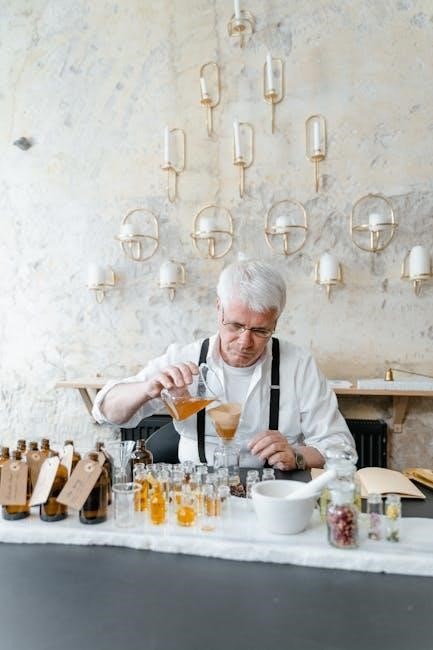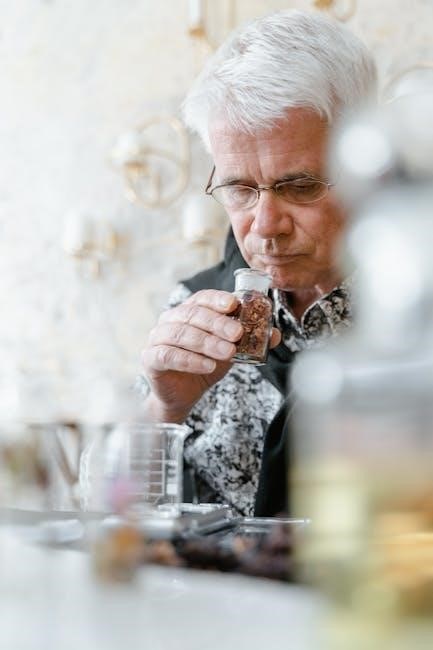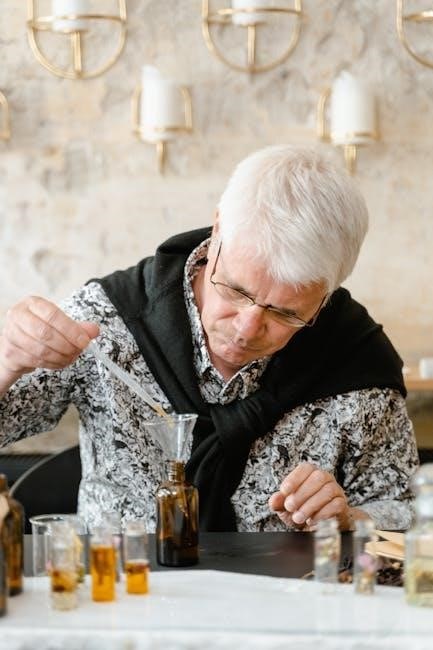When selecting a perfume, understanding fragrance concentration is key. This guide explains the different perfume concentration levels, from Parfum with its high oil content to Eau Fraiche with its light, refreshing nature. Knowing these differences helps you choose a fragrance that suits your preferences and needs.
The world of fragrance can be overwhelming, especially when considering the various concentrations available. This refers to the proportion of perfume oil present within a fragrance compound, directly impacting its strength, longevity, and overall scent profile. Understanding these nuances allows you to make informed decisions, selecting the perfect scent for any occasion.
Fragrance concentration is essentially the percentage of pure perfume oil in a mixture of alcohol, water, and other ingredients. A higher concentration means a greater proportion of fragrant oils, resulting in a more intense and longer-lasting scent. This also affects the price point, with higher concentrations typically commanding a premium due to the quality and quantity of oils used.
Perfumes are classified into distinct categories based on their fragrance concentration. These classifications include Parfum (or Extrait de Parfum), Eau de Parfum (EDP), Eau de Toilette (EDT), Eau de Cologne (EDC), and Eau Fraiche. Each level offers a unique scent experience, ranging from potent and enduring to light and refreshing. Selecting the appropriate concentration ensures that your fragrance aligns with your desired intensity and lasting power.

Understanding Perfume Oil Concentration
Perfume oil concentration is the cornerstone of fragrance strength and longevity. It dictates the intensity of the scent and how long it lingers on your skin. The higher the concentration, the more pronounced the fragrance, and the longer you can expect it to last throughout the day. This is because a greater amount of essential oils are present in the formulation.
Different concentrations cater to diverse preferences and occasions. A high concentration, like Parfum, is ideal for those who desire a powerful, long-lasting scent experience. Lower concentrations, such as Eau de Toilette or Eau Fraiche, are perfect for lighter, everyday wear, offering a more subtle and refreshing aroma. Understanding the oil concentration allows you to select a fragrance that aligns with your personal style.
It’s important to note that fragrance projection, or sillage, is also affected by oil concentration. Higher concentrations tend to project further, creating a noticeable scent trail. Lower concentrations stay closer to the skin, offering a more intimate and personal experience. The choice depends on your desired impact and the environment in which you’ll be wearing the fragrance.
Parfum (Extrait de Parfum)
Parfum, also known as Extrait de Parfum, represents the pinnacle of fragrance concentration. Boasting a perfume oil concentration typically ranging from 20% to 40%, it offers the most intense and long-lasting scent experience available. This high concentration translates to a richer, more complex aroma that unfolds beautifully on the skin over time.
Due to its potency, Parfum is often considered a luxurious choice, suitable for special occasions or for those who desire a signature scent that makes a lasting impression. The longevity of Parfum is exceptional, often lingering for an entire day or even longer, depending on the individual’s skin chemistry and environmental factors; The initial investment in Parfum is often offset by the fact that less product is needed per application.
Parfum’s high concentration also means it tends to have a more subtle projection compared to lighter concentrations. The scent stays closer to the skin, creating a more intimate and personal aura. This makes it a good option for those who prefer a sophisticated and understated fragrance presence.
Eau de Parfum (EDP)
Eau de Parfum, commonly abbreviated as EDP, stands as a popular and well-balanced fragrance concentration. Typically containing between 15% and 20% perfume oil, it provides a noticeable and enduring scent experience that lasts for a substantial portion of the day, generally around 4 to 6 hours.
EDP strikes a harmonious balance between fragrance intensity and longevity, making it a versatile choice for both daytime and evening wear. Its moderate concentration allows the fragrance to project well without being overpowering, making it suitable for a variety of settings and occasions. The scent develops gracefully on the skin, revealing its different layers and nuances over time.
Eau de Parfum is widely available and often considered a good value for its performance. It offers a richer and more complex scent compared to lighter concentrations like Eau de Toilette, while remaining more affordable than the highly concentrated Parfum. It is a reliable choice for those seeking a long-lasting and impactful fragrance experience.
Eau de Toilette (EDT)
Eau de Toilette, frequently seen as EDT, is a common fragrance concentration recognized for its lighter and fresher character. Generally, it contains between 5% and 15% perfume oil, making it a more subtle option compared to Eau de Parfum. Due to its lower concentration, EDT typically lasts for around 2 to 3 hours, requiring reapplication throughout the day to maintain its scent.
EDT is often favored for daytime wear, especially in warmer months, because of its refreshing and airy qualities. The lower concentration makes it less overpowering, making it ideal for casual settings and those who prefer a lighter fragrance experience. Its invigorating nature makes it a popular choice for everyday use.
Eau de Toilette is generally more affordable than EDP or Parfum, making it an accessible option for a wider range of consumers. While its longevity is limited, its affordability and refreshing character make it a staple in many fragrance collections. It’s a great option for those who enjoy experimenting with different scents or prefer a more subtle fragrance profile.
Eau de Cologne (EDC)
Eau de Cologne, commonly abbreviated as EDC, is a fragrance concentration known for its light and refreshing scent profile. Typically, it contains a low concentration of perfume oils, ranging from approximately 2% to 4%. Because of this lower concentration, Eau de Cologne has a shorter longevity compared to other fragrance types, generally lasting for around 2 hours.
Eau de Cologne is often characterized by its crisp and citrusy notes, making it a popular choice for a quick and invigorating refresh. Its light nature makes it well-suited for warm weather or for those who prefer a subtle fragrance. Due to its lower price point, EDC is often used liberally, providing a burst of scent without being overpowering.
Historically, Eau de Cologne has been a popular choice as an all-over body splash. Its refreshing and clean scent profile makes it a versatile option for daily use. While its longevity is limited, its affordability and refreshing qualities make it a classic fragrance choice for those seeking a light and invigorating scent.
Eau Fraiche

Eau Fraiche, translating to “fresh water,” represents the lightest fragrance concentration available. It typically contains only 1% to 3% perfume oil, diluted in a base that is primarily water rather than alcohol. This high water content makes Eau Fraiche an exceptionally subtle and refreshing option, ideal for those seeking a barely-there scent experience.
Due to its low concentration, Eau Fraiche offers the shortest longevity, often lasting only an hour or two. Its delicate nature makes it suitable for individuals who are sensitive to stronger fragrances or prefer a very subtle scent for everyday wear. Eau Fraiche is often used as a body splash, providing a light and airy fragrance that won’t overwhelm the senses.

Characterized by its crisp and clean notes, Eau Fraiche often incorporates citrus, herbal, or aquatic accords. Its refreshing profile makes it a popular choice for warm weather or post-workout refreshment. While it requires frequent reapplication, Eau Fraiche provides a gentle and invigorating fragrance experience that is perfect for those seeking a subtle and understated scent.
Factors Affecting Fragrance Longevity
While fragrance concentration plays a significant role in longevity, several other factors influence how long a scent lasts on your skin. Skin type is a crucial determinant; oily skin tends to hold fragrance longer than dry skin due to the oils acting as a natural anchor for the scent molecules. Hydrated skin also contributes to better fragrance retention, so moisturizing before application is beneficial.
Environmental conditions, such as humidity and temperature, can affect how a fragrance develops and lasts. Warmer temperatures can intensify the scent but may also cause it to dissipate more quickly. Application technique is another key aspect; applying fragrance to pulse points, where blood vessels are close to the surface, helps to radiate the scent due to the body heat.

Furthermore, the specific notes within a fragrance influence its staying power. Base notes, being heavier and more substantial, tend to last the longest, while top notes are the most volatile and fade away quickly. The overall composition and quality of ingredients also impact longevity, with higher quality fragrances often exhibiting better performance. Finally, individual body chemistry interacts uniquely with each fragrance, leading to variations in how long it lasts and how it smells on different people.
Choosing the Right Concentration
Selecting the appropriate fragrance concentration involves considering several personal and situational factors. Think about the occasion: for everyday wear or casual settings, lighter concentrations like Eau de Toilette or Eau de Cologne might be preferable, offering a subtle and refreshing scent without being overpowering. For more formal events or evening affairs, consider Eau de Parfum or Parfum, which provide a richer and longer-lasting fragrance experience.
Your personal preference also plays a crucial role. Some individuals prefer a lighter, more delicate scent that doesn’t dominate, while others enjoy a bolder fragrance that makes a statement. Experimenting with different concentrations and fragrance families can help you discover what resonates best with your style.
Consider the climate and season as well. In warmer weather, lighter concentrations are often more comfortable, as heat can amplify the scent. During cooler months, richer concentrations may be more suitable, providing warmth and depth. Finally, be mindful of your workplace or social environment. Opt for lighter concentrations in settings where strong fragrances might be disruptive or overwhelming to others. Ultimately, the right concentration is the one that aligns with your personal taste, the occasion, and the environment.



